Hello, my name is Amelia and I am currently majoring in Anthropology through SUNY Albany in New York. This week we dove into our geology module!
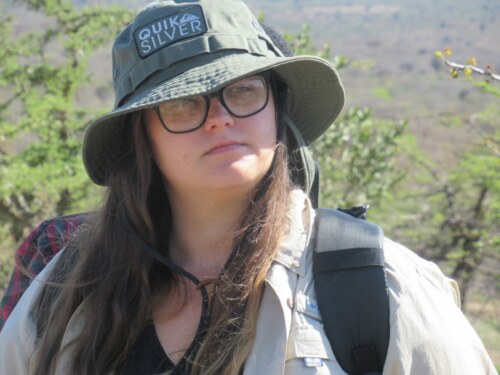
We started off by learning the basics of using both the Brunton compass, along with more modern technology by using a handheld GPS system linked to satellites for navigation. Professor Patrick Gathogo, the lead instructor for this module is incredibly knowledgeable, and it very much shows when taking his students out in the field!
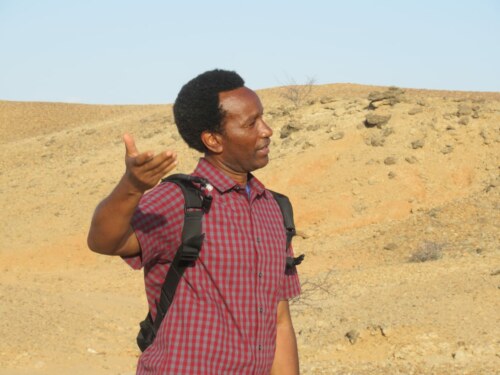
Professor Patrick Gathogo in the field.
A quick introductory lesson was on how to differentiate between the layers of rock and sediment, as well as define where possible faults might be within the Turkana Basin. We were then taken to the Turkwel River where we could put our new skills to the test! We were paired up and sent off to really observe the area around us, especially the modern sediments in this braided river. We were able to observe modern depositional activities within the river, which serve as analogs to our understanding of the ancient sediments.
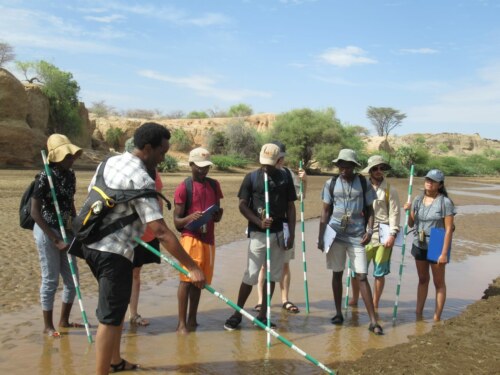
Understanding sedimentary geology through observations of braiding in modern sedimentary systems.
The concept of uniformitarianism cements the idea that all natural processes occurring on earth today are a clear representation of what happened in the past. Ironically, the river had much more life in it than when we had our ecology module. We were even able to locate small pools full of algae, and we found a large group of tadpoles in one of the smaller ‘lagoons’. After being able to walk around and collect samples of different sediments, we had presentations on what each group had observed, and it was very interesting to see all the different theories the class had come up with. My partner and I were able to come up with a few theories as to why the river showed certain patterns in the ripples in the sand. One of the major components we found was the dam regularly releasing water into the river. We assume the dam is why we found large sections of usually dry land in the river, completely drenched on the top layer.
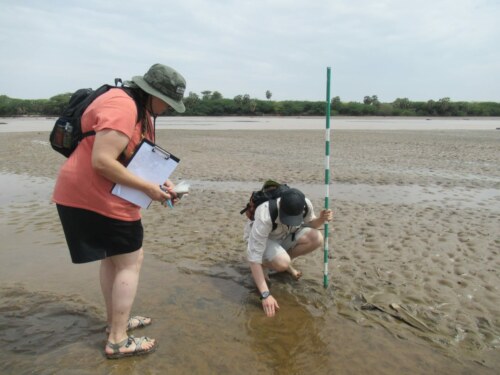
Amelia and Onni examining the ripples in the river sediments.
We were also able to walk around the new hominin site located in South Turkwel. Looking at the site itself, it was fascinating to see how many deposits of volcanic ash were in the area that were deposited from the once flowing river that was there. One of the most exciting things that happened was a discovery we made while walking along the outcrops. I looked down and discovered part of a stone tool! It really shows the amazing history that is found here in the Turkana Basin.
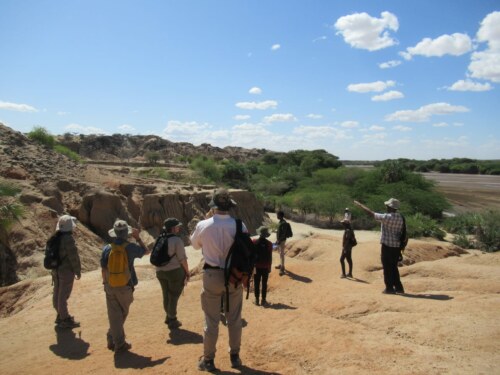
Professor Patrick Gathogo talking to the students at the edge of the South Tukrwel deposits.
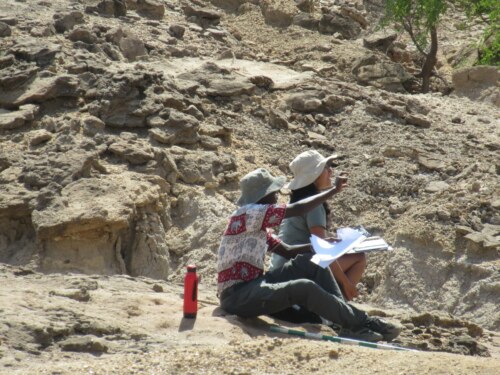
Steve and Flor in the South Turkwel deposits.





